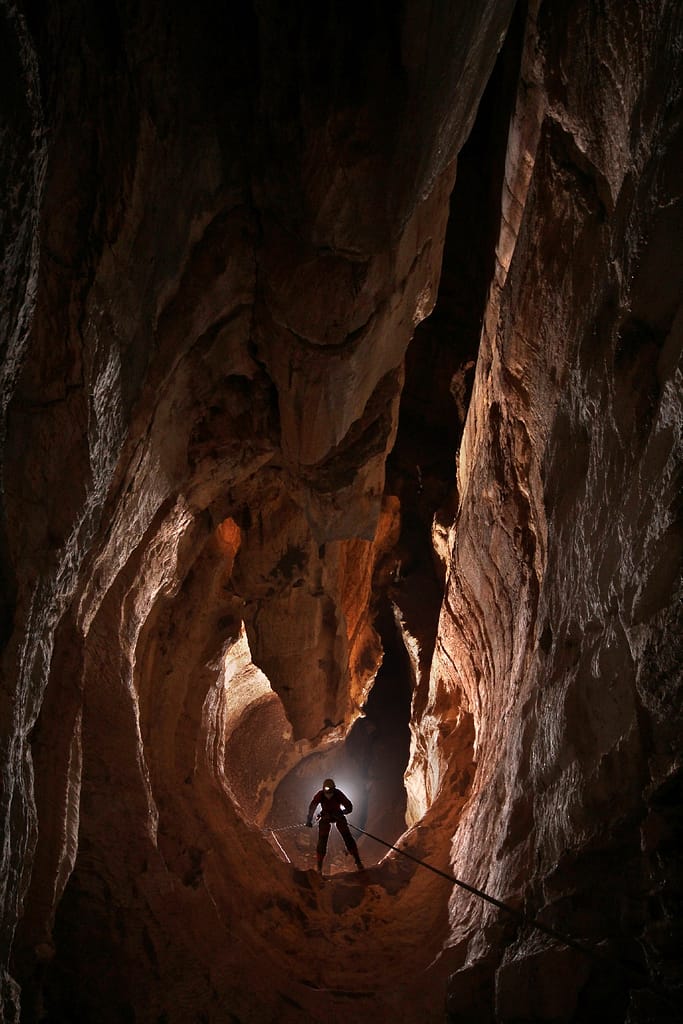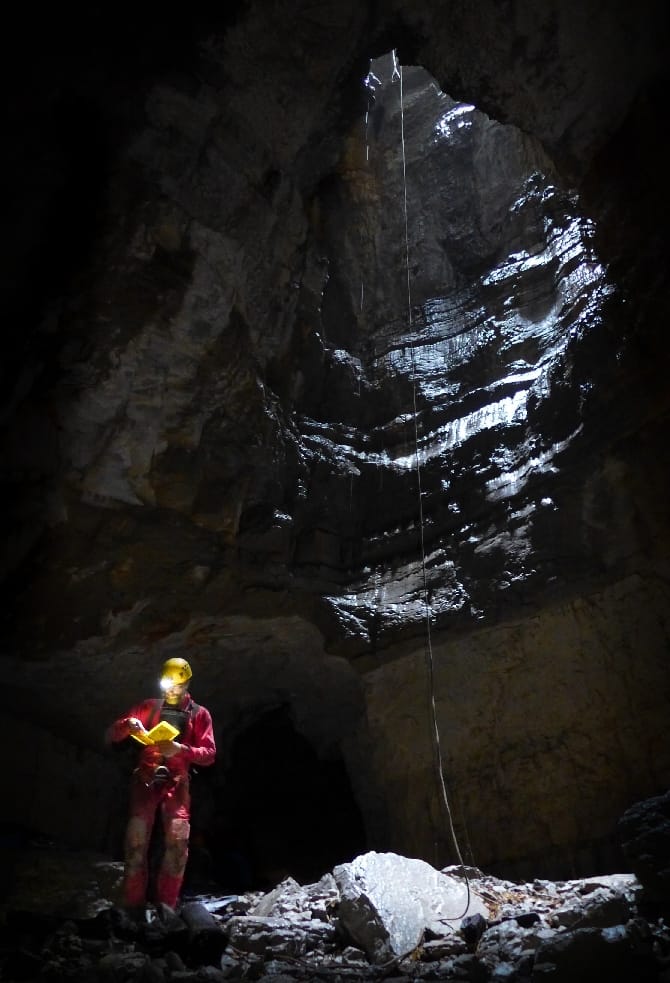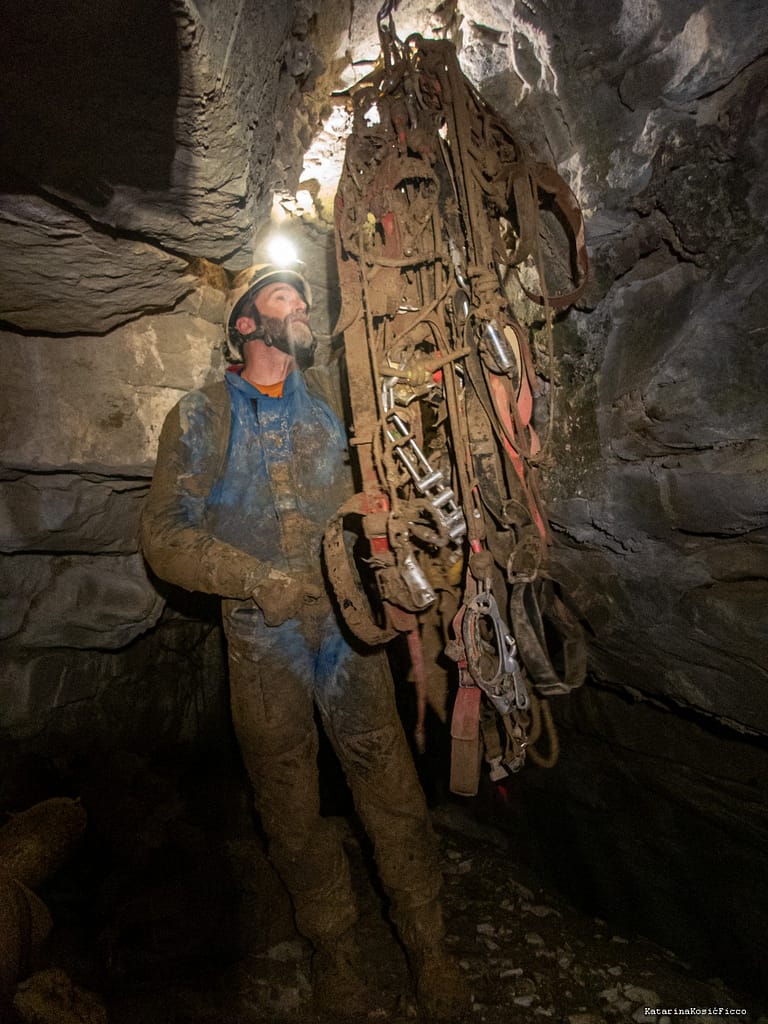Caving
Caving is defined as the sport of exploring caves. But caving is so much more than mere sport. Caving enables you to go where no one has been before, to explore the last unknown worlds to humankind. Caving, particularly exploration caving, requires you to become a climber, mountaineer, hiker, rope expert, surveyor, prospector, explorer, contortionist, rock expert, geologist, hydrologist, and most importantly, team player. Caving challenges you and makes you realize how small you are and how little you can achieve on your own. Caving teaches you the 3Ps: Persistence, Perseverance, and Patience, as well as respect and value your team. Most importantly, caving lets you learn about the Earth’s history and the valuable resources caves can provide, such as potable water. Keep on reading to learn what drives us to go where several don’t dare to go.
1. Why Caving?
Surrounded by walls, mud, and darkness you listen to the silence. You hear a drop of water falling in the distance and making an echo that would put the breaking waves to shame. You turn your light off to save the power and wait. Suddenly, you detect a shimmering of light in the distance. Is it a light, or is it your imagination? Then you start hearing voices in the distance? Is that all in your head? But the voices grow louder, and the glistening of the light tells you that your team is returning and your rest time is over. It’s time to take your pack and continue your journey.



When asked why caving, most cavers emphasize that it takes you where no one has been before, enables you to explore the ultimate frontier in the world, and discover what no one has seen before. Although these are fair reasons, there is so much more to caving. Keep on reading to learn what drives us to go where several don’t dare to go.



Caving, particularly exploration caving, requires you to become a climber, mountaineer, hiker, rope expert, surveyor, prospector, explorer, contortionist, rock expert, geologist, hydrologist, and most importantly, team player.



1.1. A caver goes on a mountain twice in one trip
Caves, at least deeper and vertical caves, are often located on the ridges or mountain slopes. Even with modern LIDAR and aerial imagery, cave entrances aren’t easy to find. Therefore, a caver must hike vast distances off-trail and often over cliffs and mountain ridges. In addition, cavers need to carry all the caving gear, including ropes and rigging gear, as well as camping gear if the trip is longer, and the necessary food and water. The backpack weighs 25-40 kg (50-80 pounds). Once they discover the cave and start exploring it, they descend into the mountain, sometimes over 1,000 m (3,000 feet) deep. Once done with the exploration, they must ascend out of the cave and descend the mountain again. Hence conquering the mountain twice in a day. Needless to say, this makes for a very long day, usually 15 – 20 hours.
